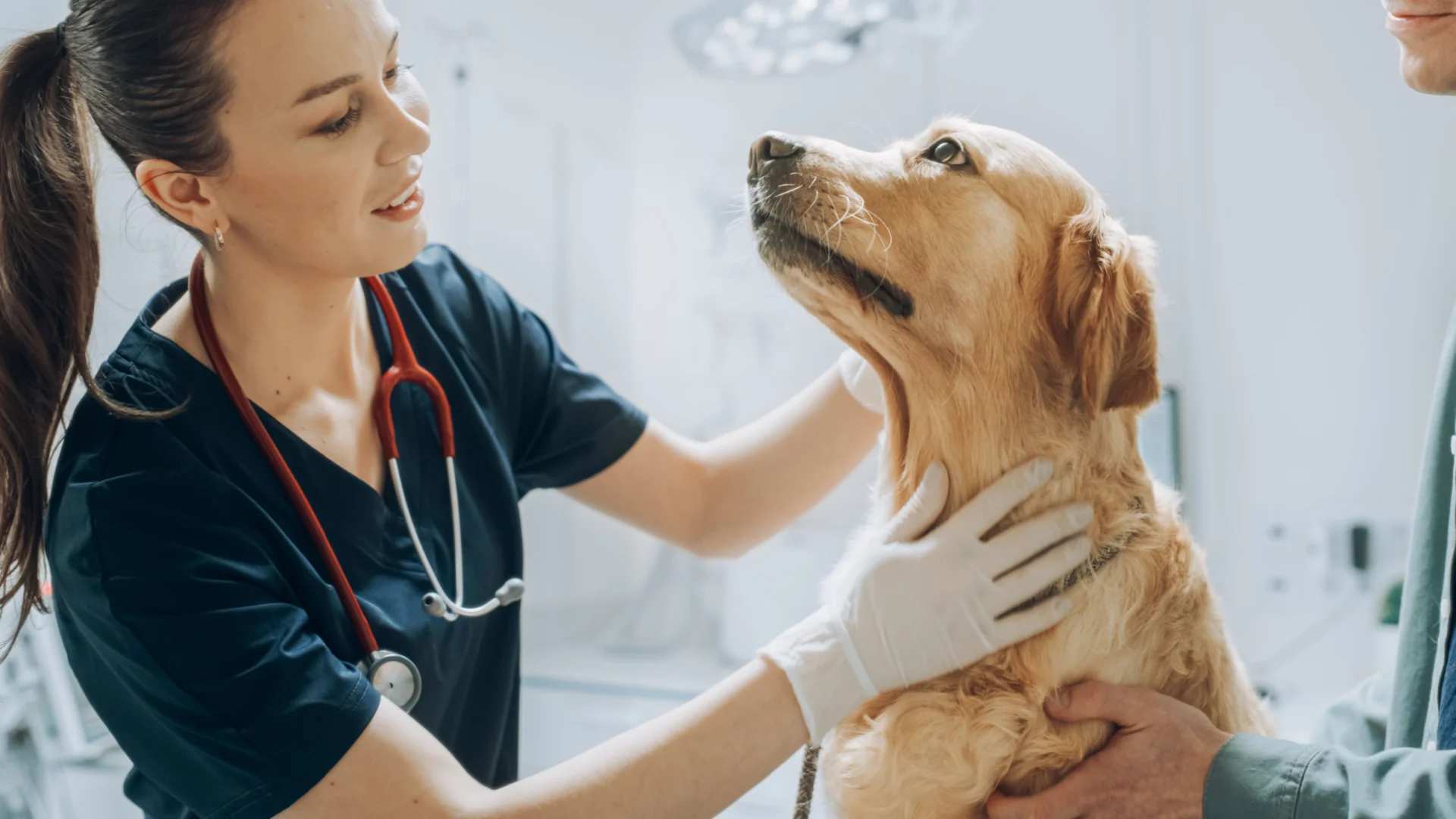When two dogs presented with severe, ultimately fatal respiratory disease, the clinical team turned to MiDOG for help identifying the causative agent. What followed was not only a landmark diagnostic effort, but it was also a scientific breakthrough. In a collaboration between veterinary clinician Dr. Lina Crespo Bilhalva and MiDOG scientist Dr. Mark Yacoub, PhD, a complex canine respiratory case became the gateway to something extraordinary: the discovery of a previously unknown bacterial species, now formally sequenced and deposited in NCBI’s public genome repository.
🔗 GCA_049446255.1 – Castellaniella sp.
This case marks a turning point for how next-generation diagnostics can uncover hidden pathogens and reshape our understanding of emerging infectious diseases.
The Case: Two Dogs, Severe Lung Disease, and a Diagnostic Puzzle
The clinical scenario involved two unrelated canine patients with aggressive pulmonary infections. Both cases were advanced, with significant lung damage. Traditional diagnostics failed to produce a conclusive answer, prompting the veterinary team to submit tissue samples to MiDOG.
MiDOG’s initial next-generation sequencing (NGS) analysis revealed the presence of Castellaniella species in both samples, but with a twist:
- Sample 1: Castellaniella denitrificans
- Sample 2: Castellaniella sp. (unclassified at the species level)
This immediately raised a red flag: despite similar presentations, the infections were caused by different bacterial species, and one of them appeared to be previously uncharacterized.
Whole Genome Sequencing: From DNA Fragment to Scientific First
To dig deeper, MiDOG offered the clinical team whole genome sequencing (WGS) of the second sample process typically reserved for research labs, not routine diagnostics. The team removed all host (dog) DNA from the lung sample, isolating the microbial genome.
This sample had a high bacterial load, which made it ideal for deep sequencing. MiDOG’s team then:
- Conducted de novo genome assembly
- Mapped the entire bacterial chromosome and plasmid content
- Classified the organism down to its closest relatives
- Performed functional annotation of over 4,000 genes
The result: a complete genome belonging to a new, previously unidentified species of Castellaniella, a genus known for its resilience in toxic environments.
View of the Genome on NCBI
You can now explore the full genome, publicly available on the National Center for Biotechnology Information (NCBI):
🔗 GCA_049446255.1 – Castellaniella sp.
Key Findings from the Genome
This novel Castellaniella species is far from benign. The genetic architecture revealed a host of traits that explain both its survivability in extreme environments and its pathogenic potential in hosts:
- Toxin-Antitoxin Systems
These genes allow the bacterium to secrete toxins that kill surrounding competitors—while simultaneously producing antitoxins that protect itself. This biological warfare mechanism makes it highly competitive within the microbiome and difficult to treat, as it can eliminate both competitors and potentially beneficial flora.
- Environmental Resilience Genes
Castellaniella is known to thrive in acidic, polluted, and nitrate-rich environments. This strain carries genes for:
- Nitric oxide reduction
- Decomposition of heavy metals and toxic compounds
These features, while adaptive in nature, translate into high virulence when infecting a host.
- Virulence Factors
The genome is “riddled” with virulence genes, including:
- Genes for injecting toxins into host cells
- Secretion systems for host cell manipulation
- Genetic mechanisms for evading immune response
These features suggest this bacterium is well-equipped to cause tissue damage and resist typical immune clearance.
- Plasmids with Antimicrobial Resistance (AMR) Genes
The organism harbored several plasmids, circular DNA molecules that move easily between bacteria. These plasmids carried putative AMR genes, which:
- Confer resistance to drugs like ampicillin and trimethoprim
- May spread to other bacteria in the environment or host
This adds to the growing concern around plasmid-mediated resistance, particularly in veterinary and zoonotic pathogens.
Structural Genomics: A Deeper Layer of Insight
One of the most striking aspects of the genome analysis was the identification of a mobile genetic elemental segment of DNA that appeared distinct from the rest of the genome due to an abrupt change in GC content (a method called nucleotide skew analysis).
Inside this mobile element?
The cluster of virulence and toxin-antitoxin genes, suggesting that this segment may have been acquired via horizontal gene transfer and may continue to move between organisms.
In other words: this dangerous trait cluster is both portable and likely to spread.
Scientific Integrity Meets Curiosity
MiDOG’s bioinformatics lead didn’t stop just assembling the genome. In an effort well beyond typical diagnostic scope, each of the ~4,000 genes were functionally annotated to determine its potential role in the organism’s pathogenicity and survival strategy.
This level of dedication reflects MiDOG’s mission: to not just diagnose, but to investigate, understand, and advance what’s possible in microbial diagnostics.
Why It Matters
This discovery underscores the future of diagnostic microbiology:
- Traditional cultures can miss fastidious or novel pathogens.
- NGS identifies everything present, not just what grows.
- The whole genome sequencing reveals how and why an organism causes disease.
- Publicly available genomes support open science, comparative research, and downstream innovation.
By offering real-time insights into microbial evolution, resistance, and virulence, MiDOG provides clinicians with the tools needed to treat, not guess.
Closing Thoughts
The identification and genome assembly of a novel Castellaniella species from a canine lung infection wasn’t just a diagnostic win, it was a scientific milestone. It reaffirms MiDOG’s role as a leader in precision veterinary diagnostics and microbial discovery.
Want to partner on whole-genome sequencing or advanced microbial analysis? Let’s uncover the unseen, together.
Categories: Antibiotic Resistance, Antimicrobial Resistance, Bacterial Infections, Dogs, Next-Gen DNA Sequencing Technology, Respiratory Infection

